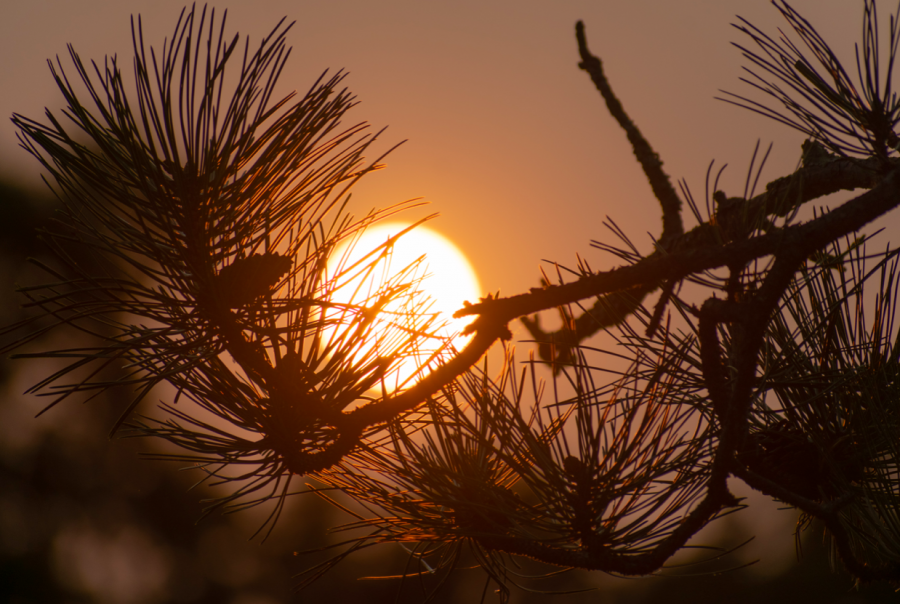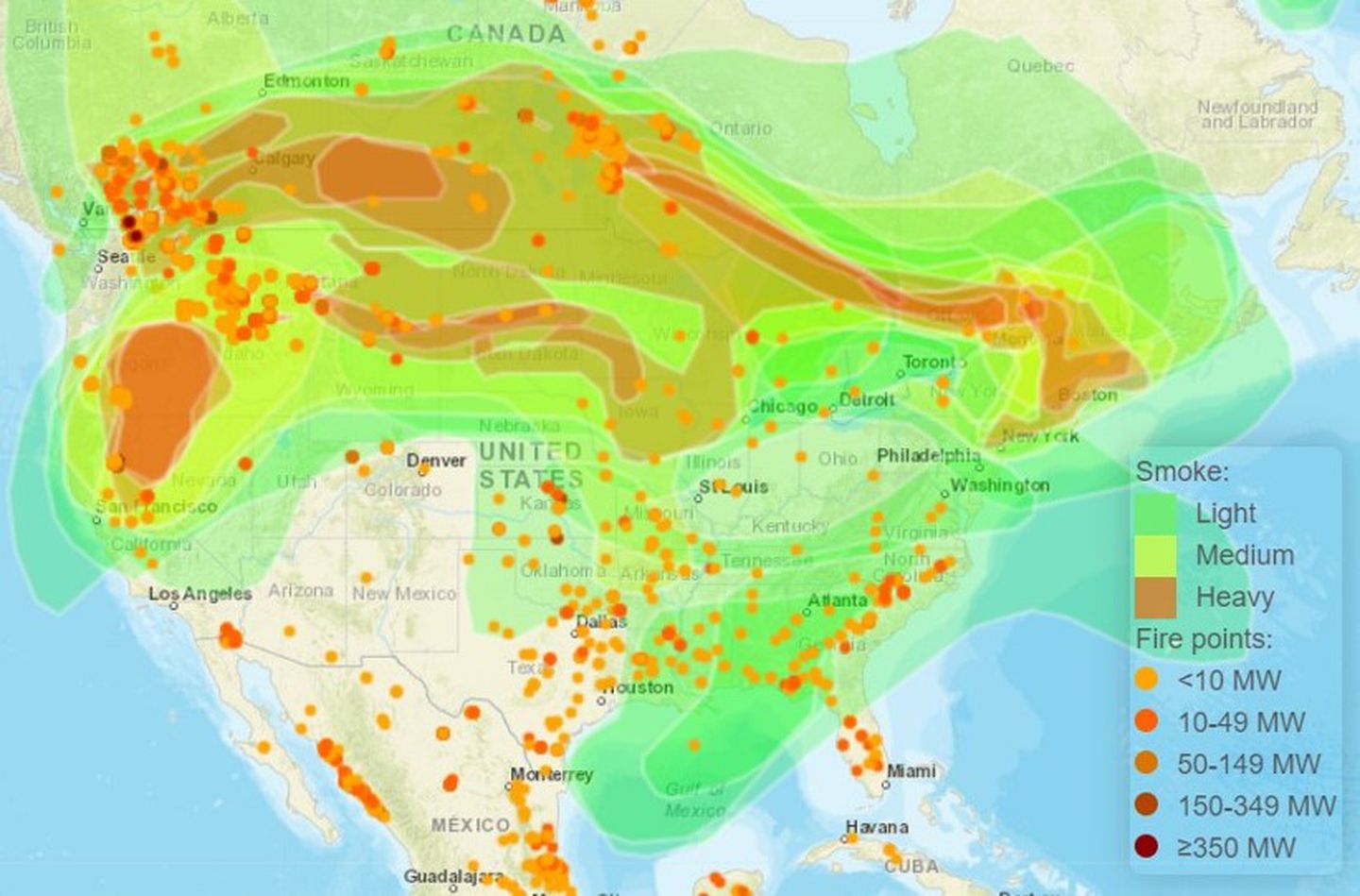Wildfire Smoke in New England Is “Pretty Severe from Public Health Perspective”
KAT J. MCALPINE in Boston University's The Brink
On
Monday, the air quality in Boston and the greater New England area was so bad that it was only rivaled by the areas in Northern
California and Oregon currently on fire. 
Credit: Emily Chaf, Wayland Student Press
An interactive map from the National Oceanic and Atmospheric Administration showed how smoke from the wildfires out west were being carried across the continental US by winds and the jet stream.
In response to the blanket of smoke engulfing the
commonwealth’s skies, the Massachusetts Department of Environmental
Protection issued an air quality alert.
Around
Boston, people reported not only seeing a film of smoke in the skies, but also
smelling the scent of wood burning. Firefighters across the state fielded calls
from concerned residents who worried that a fire was burning nearby. This is
the second time in the last two weeks that smoke from the western forest fires
has been carried to New England—but the smoke was markedly thicker and more
pungent this time around.
With scientists predicting that our climate will continue to get hotter and drier, exacerbating normal patterns of forest fires, The Brink reached out to Boston University environmental earth scientist Mark Friedl for help understanding what these changes mean for our planet and for human health.
Friedl, an expert in using NASA satellite imaging to interpret large-scale environmental trends, recently published new research findings indicating that forest fires in Earth’s northernmost forests could accelerate climate change—potentially locking the planet in a feedback loop where drier climate causes more fires and those fires, in turn, speed up global warming.
“Fires are intensifying, and when forests burn, carbon
is released into the atmosphere,” Friedl says about those findings.
Friedl, a BU College of Arts & Sciences professor of earth and environment and interim director of BU’s Center for Remote Sensing, answers four questions posed by The Brink about the effects of western wildfire smoke over New England and the US.
An interactive map from the National Oceanic and Atmospheric Administration (NOAA) shows the smoke from the wildfires in the Western US and Canada being carried across the country. Map courtesy of the NOAA
The
Brink: Based
on your research and expertise in remote global sensing and monitoring, what do
these current wildfires tell us about where Earth’s climate is going?
Friedl: These
fires are further evidence of how climate change is impacting ecosystems and
forests. Fire is normal in forested ecosystems, especially in western forests
that tend to be drier, and hence more fire-prone, relative to forests in the
eastern US. That said, the increased frequency, intensity, and scale of
fires we’ve seen in recent years is a clear by-product of climate
change. They are the proverbial canary in the coal mine, telling us that
the climate is changing, and it’s going to increasingly impact our lives on a
day-to-day basis.
Does
this much smoke, spreading across the country, impact vegetation elsewhere
besides the forests that are burning?
Smoke
like we experienced today tends to be pretty short-lived and doesn’t have much
impact on vegetation across the country. Indeed, it’s not entirely unheard of
for smoke to travel long distances in the atmosphere, and it’s not
unprecedented for smoke from fires in the western US to make it all the way to the eastern US.
What
about the effects on human health?
Most
of the time, the smoke is diffuse and concentrated in the upper atmosphere, and
so we just experience it as haze. What we experienced [Monday], with very
poor air quality, is qualitatively different, and is pretty severe from a
public health perspective. Hopefully, this is not a harbinger of things to
come. It’s also worth noting that at least some of the smoke we see right
now is coming from fires in western and central Canada, and not just from the
western US.
With
wildfires becoming more common as the climate gets hotter and drier, what will
happen if fires burn faster than forests can replenish themselves? Can you
predict what the future dynamics look like in the West and Pacific Northwest
forests?
If
the climate continues to warm and becomes drier in the west, at some point some
forests will not be able to recover. If there’s a silver lining in these fires,
it’s that hopefully they provide a wake-up call for society to change and start
to meaningfully address the climate crisis.
Kat J. McAlpine is editor of The Brink, Boston University’s news site for scientific breakthroughs and pioneering research. Kat has been telling science stories for over a decade, and prior to joining BU’s editorial staff, publicized research at Boston Children’s Hospital, Harvard University’s Wyss Institute for Biologically Inspired Engineering, and the University of Connecticut’s School of Engineering.
